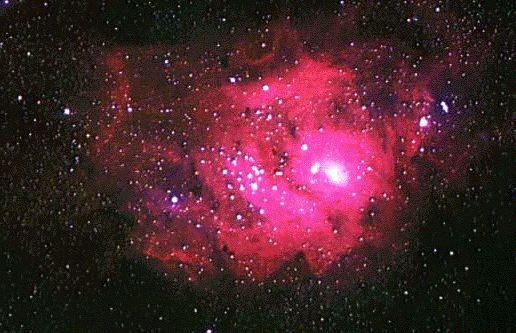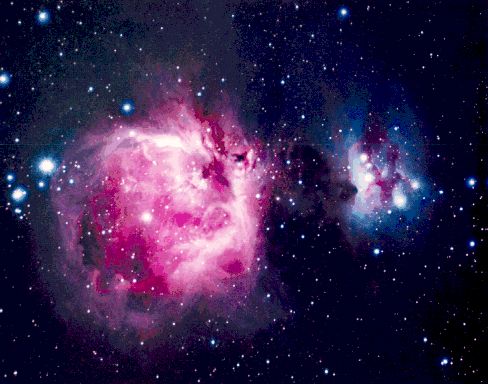Space Nebula Pictures
 |
 |
 |
| Lagoon Nebula |
Orion Nebula |
Saturn Nebula |
A Planetary Nebula Sampler
A planetary nebula forms when a star can no longer support
itself by fusion reactions in its center. The gravity from the material in the
outer part of the star takes its inevitable toll on the structure of the star,
and forces the inner parts to condense and heat up. The high temperature central
regions drive the outer half of the star away in a brisk stellar wind, lasting a
few thousand years. When the process is complete, the remaining core remnant is
uncovered and heats the now distant gases and causes them to glow.
Why "Planetary" Nebula?
Despite the name,
these objects are totally unrelated to "planets". It is commonly thought that
they may represent the final episode of the Sun's existence as a star. This
concept has been questioned recently by Jacoby, Fulton, Morse, Kwitter and Henry
( 1997) and Bond (2001) - wherein evidence from
globular cluster stars
indicates that stars must be about 20% heavier than the Sun to form a PN. It is
estimated that there are about 10,000 planetary nebulae in our galaxy, so they
are a relatively common, although short-lived phase (about 25,000 years) of the
stellar life cycle.

Back to the Table

Back to the Table

Back to the Table





